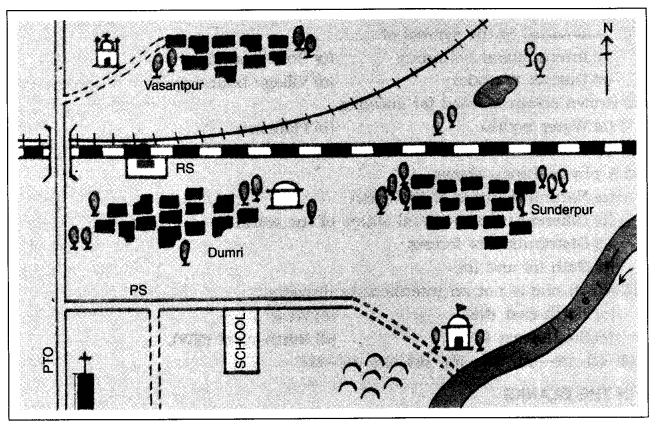GetStudySolution
Getstudysolution is an online educational platform that allows students to access quality educational services and study materials at no cost.
NCERT Solutions for class 6 Geography chapter 4 – Maps
Back Exercise
1. Answer the following questions briefly.(c) What do you mean by the term ‘the scale of the map’?
Answer
The scale is the ratio between the actual distance on the ground and the distance shown on the map.
(d) How are maps more helpful than a globe?
Answer
Maps are more helpful than a globe in the following manner:
• A globe can be useful when we want to study the earth as a whole. But, when we want to study only a part of the earth, maps is more useful as it can represent the entire earth's surface or a part of it.
• Maps can be useful to show the physical features of the earth such as mountains, plateaus, plains etc., political boundaries such as countries, cities, towns and villages etc. as well as specific information such as road maps, rainfall maps, distribution of forest, industries etc.
(e) Distinguish between a map and a plan.
Answer
A map
|
A plan
|
| It is a representation of earth’s surface or a part of it, on a sheet of paper. | It is a drawing of a small area on a large scale, on a sheet of paper. |
| It can be used for representing countries, states, villages, town etc. | It is used for representing those things which can't be shown in map, for example, the length and breadth of a room |
(f) Which map provides detailed information?
Answer
Large scale maps provide detailed information.
2. Tick the correct answers.
(a) Maps showing distribution of forests are
(i) Physical map
(ii) Thematic Map
(iii) Political map
► (ii) Thematic Map
(b) The blue colour is used for showing
(i) Water bodies
(ii) Mountains
(iii) Plains
► (i) Water bodies
(c) A compass is used –
(i) To show symbols
(ii) To find the main direction
(iii) To measure distance
► (ii) To find the main direction
(d) A scale is necessary
(i) For a map
(ii) For a sketch
(iii) For symbols
► (i) For a map
In-Text Questions
Question 1.
Find out the following directions from Figure 4.1 of your textbook
(a) the direction of the Community Centre, the playground from Vikas’s house,
(b) the direction of the school from shops. (NCERT Page 25)
Answer:
(a) Community Centre – North direction
Playground – North-East direction
(b) School – East
Question 2.
Look at the Figure 4.4 of your textbook and find out:

(i) In which direction is the river flowing?
(ii ) What kind of road passes by the side of village Dumri?
(iii) Sunderpur is situated on what type of railway line?
(iv) The police station is situated on which side of the railway bridge ?
(v) On which side of the railway line do the following lie: (NCERT Page 27)
(a) Chhatri
(b) Church
(c) Pond
(d) Mosque
(e) River
(f) Post and Telegraph Office
(g) Graveyard.
Answer:
(i) South-east portion.
(ii) Metalled Road.
(iii) Broad Gauge Railway Line.
(iv) South
(v) (a) South
(b) South-west
(c) North
(d) South
(e) South-east
(f) South-west
(g) South.